Key takeaways:
- Effective physical security is tailored to the unique vulnerabilities of each business, requiring a comprehensive approach that includes technology, environmental design, and employee morale.
- Crime prevention strategies not only protect assets but also enhance employee confidence, productivity, and the overall reputation of the business.
- Common threats to physical security include burglary, internal theft, and vandalism, each with significant psychological impacts on employees and the community.
- Implementing layered security measures, staff training, and regular audits are vital strategies to enhance physical security and adapt to evolving threats.
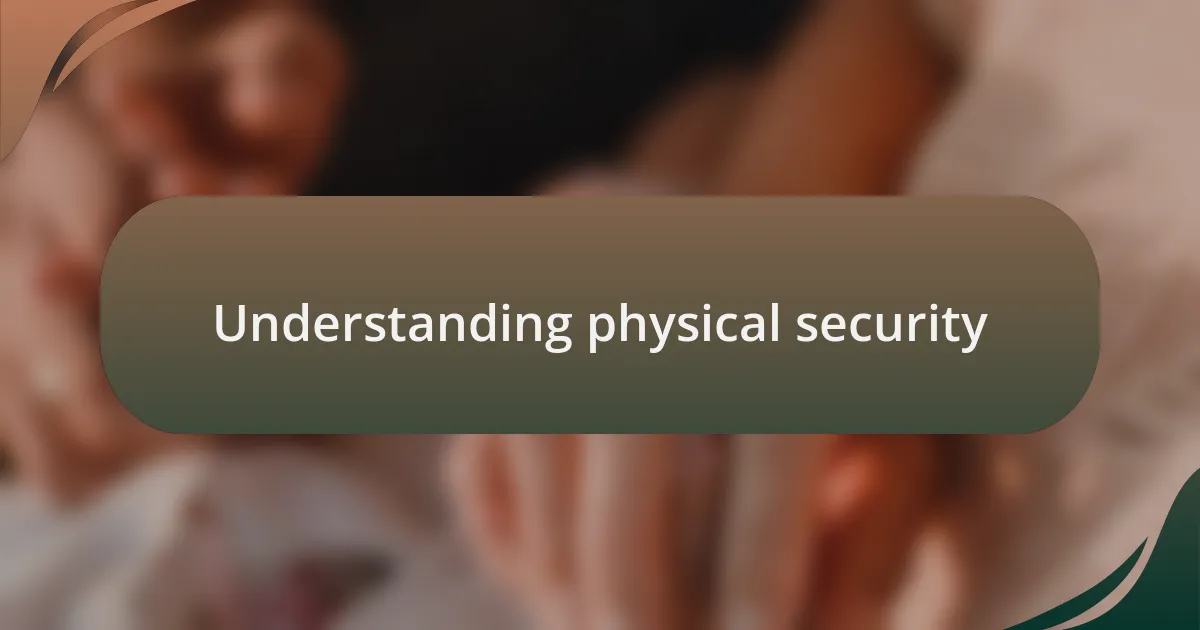
Understanding physical security
When we talk about physical security, it’s crucial to understand that it goes beyond just locks and alarms. I remember walking through an office building that had state-of-the-art security measures but still felt oddly vulnerable due to poor lighting in key areas. It left me wondering—are we prioritizing technology over common sense in our security planning?
Every business environment is unique, and understanding its specific security needs is essential. For instance, in my experience visiting various retail locations, some implemented smart access controls, while others relied solely on security personnel. This variety made me realize that effective physical security is not a one-size-fits-all solution; it requires careful analysis of individual vulnerabilities.
I’ve seen firsthand how physical security can influence not just safety but also the overall morale of employees and customers alike. When premises feel secure, it fosters a sense of trust and confidence. Have you ever walked into a well-secured space and felt an immediate sense of relief? That’s the power of a robust security framework—it not only protects assets but also enhances the experience of everyone who walks through the door.
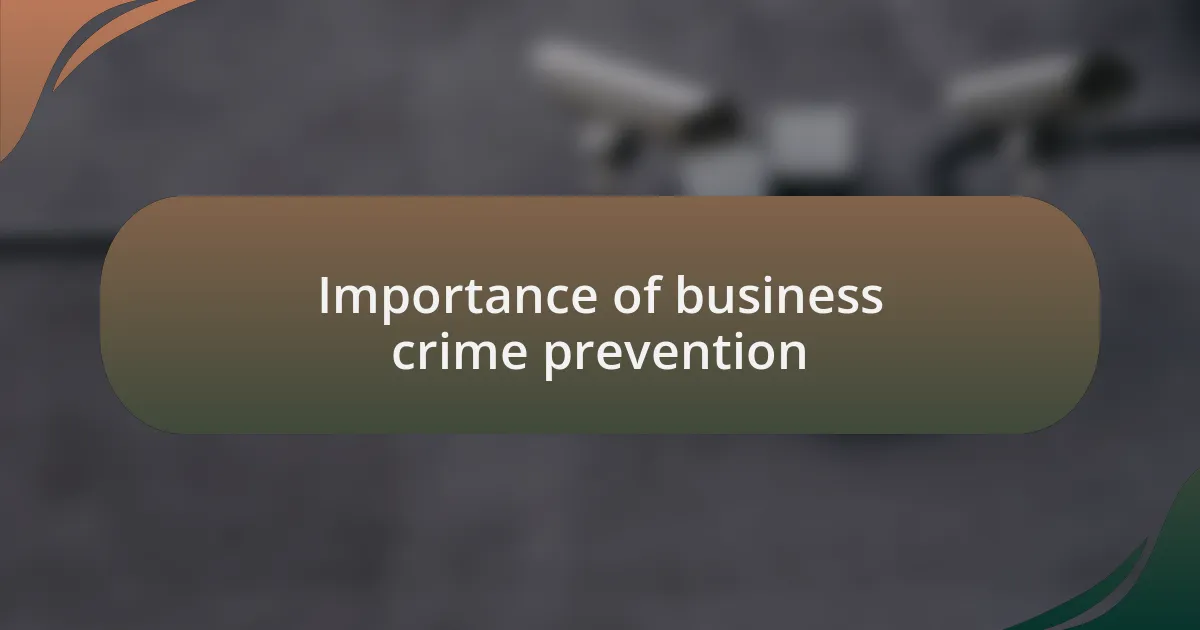
Importance of business crime prevention
Business crime prevention is not just a checkbox on a compliance list; it’s essential for safeguarding assets and ensuring a sustainable operation. I recall a small bookstore in my neighborhood that fell victim to theft not once, but twice in a year. The sense of loss was palpable in the community. That experience underscored for me how prevention strategies can significantly affect not just the business’s bottom line but also its connection to the community.
When businesses invest in crime prevention measures, they create a secure environment that boosts employee confidence and productivity. I once consulted for a manufacturing facility where the employees felt uneasy due to inadequate security. After implementing additional surveillance and access control, the shift in morale was noticeable. Employees expressed feeling more valued and cared for, which ultimately translated into better performance. Isn’t it fascinating how a secure atmosphere can directly impact work ethic and company loyalty?
Moreover, a robust crime prevention strategy can enhance a company’s reputation. I remember reading about a tech firm known for its excellent security and how it attracted more clients just because of that reputation. Clients want to work with businesses they trust. When safety is demonstrated, it speaks volumes about a business’s commitment to mitigating risks, fostering long-term relationships built on trust and transparency. How could any company afford to overlook that advantage?
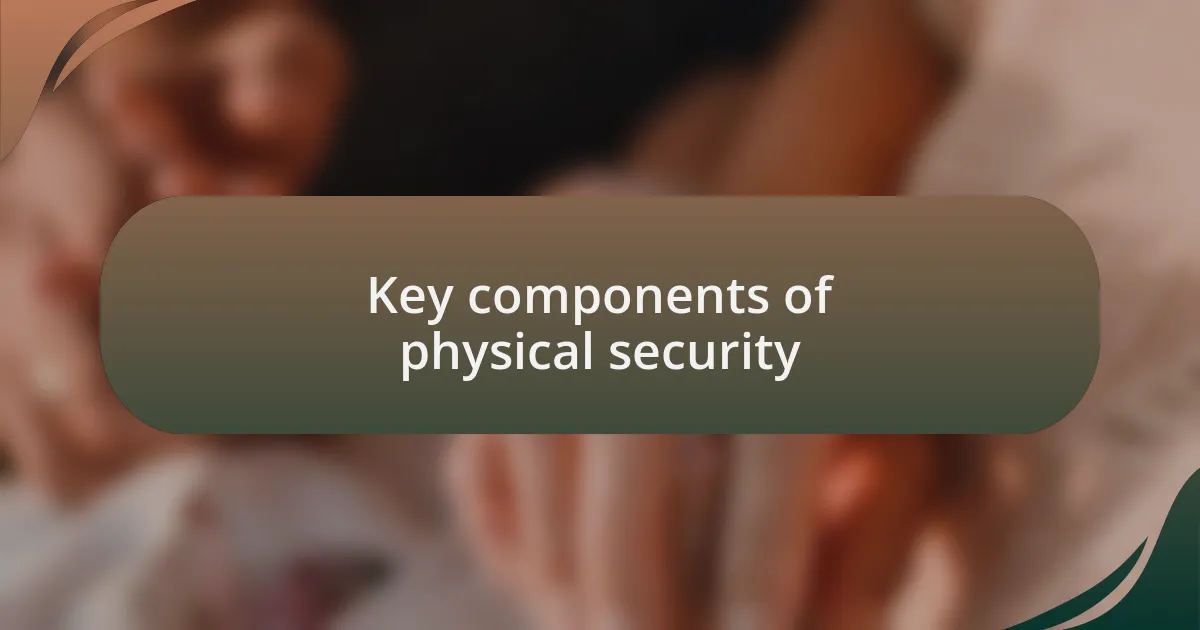
Key components of physical security
Key components of physical security encompass several crucial elements that collectively safeguard a business’s assets. One of the most fundamental aspects is surveillance, whether through closed-circuit television (CCTV) or motion sensing technology. During a recent visit to a retail store that had experienced prior break-ins, I noticed the reassuring presence of surveillance cameras. Not only did they deter potential thieves, but they also calmed the nerves of employees and customers alike, reinforcing a sense of safety in the store.
Access control systems are another vital component of physical security. They regulate who can enter specific areas of a facility and under what circumstances. At a local office building I worked with, we installed keycard access for employees after a series of unauthorized entries. The change was monumental; the employees relayed how much more secure they felt knowing that only authorized personnel could enter sensitive areas. It’s surprising how a simple keycard system can empower employees and create a culture of security.
Lastly, environmental design plays a significant role in physical security that often goes overlooked. I once visited a property where landscaping was intentionally designed to eliminate hiding spots for potential intruders. This attention to detail not only improved the aesthetic but also made the entire property feel safer. Have you ever walked through a well-lit, open courtyard and felt at ease? That’s the power of intentional design in enhancing a sense of security. By incorporating these components, businesses can create a layered approach to physical security that is both effective and reassuring.
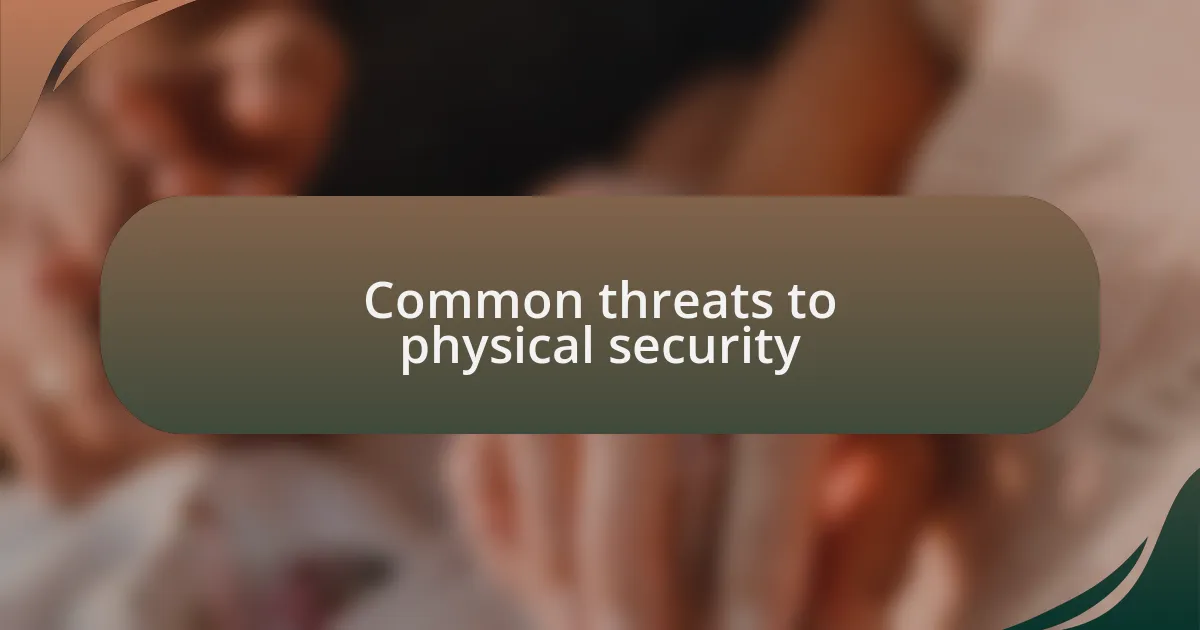
Common threats to physical security
Common threats to physical security can manifest in various forms, and each poses unique challenges. One notable concern is burglary, which not only results in the loss of valuable assets but can significantly impact employee morale. I recall a business that suffered a break-in; the sense of violation lingered, and trust among the team took a hit. It’s astonishing how such an event can disrupt the entire work environment, isn’t it?
Another frequent threat is internal theft, which can be surprisingly damaging. I once worked with a company that faced this issue when some employees took advantage of their access to sensitive areas. This situation highlighted the importance of monitoring and building a culture of trust; it’s a delicate balance. How can businesses minimize the risk of insider threats while still fostering an open environment?
Vandalism also ranks high among the common threats to physical security. A few years ago, I visited a community center that had experienced defacement, which left the staff feeling disheartened. Beyond the immediate cost of repairs, the emotional toll on the community was palpable. It raised questions about how we can create not just a physical barrier, but also a sense of ownership and pride among the people who frequent these spaces. Addressing these threats means looking beyond the mere physical aspects and considering the emotional and psychological impact on all stakeholders involved.
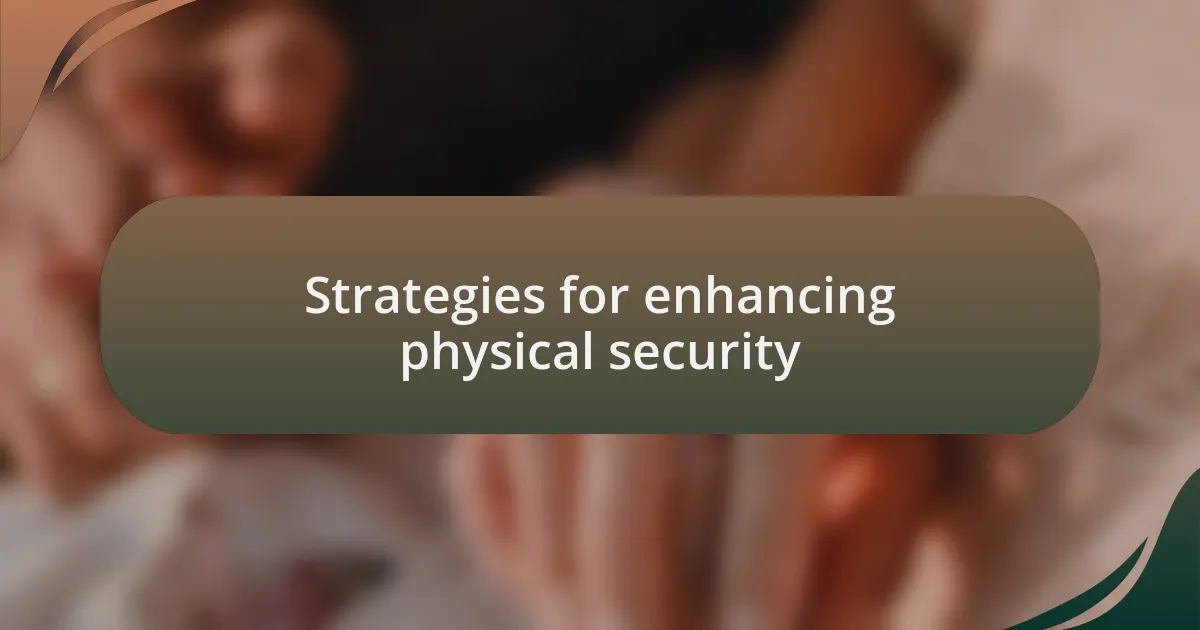
Strategies for enhancing physical security
When it comes to enhancing physical security, I’ve found that layering security measures can be incredibly effective. For instance, installing surveillance cameras in conjunction with access control systems not only deters potential criminals but also provides a clear record in case of incidents. I remember a client who implemented this strategy and shared how it transformed their sense of safety; knowing that they could monitor their premises in real-time made a significant difference in their peace of mind.
Another vital strategy is the importance of staff training. I’ve seen firsthand how empowering employees with knowledge about security protocols fosters a culture of vigilance. One company I consulted for conducted regular workshops, and it was heartening to witness employees actively reporting suspicious activities. It raised the question: how can we expect our teams to protect what they don’t understand? By ensuring that everyone is informed and involved, we not only enhance security but also build a stronger community.
Lastly, I can’t stress enough the value of regular security audits. These assessments often unveil vulnerabilities that may otherwise go unnoticed. In one audit I led, we discovered that a simple lock was outdated and could easily be bypassed. The business owner was surprised but relieved to have identified this weakness before it became a problem. How often do we take for granted that our security measures are still effective? By routinely evaluating and updating our security strategies, we can adapt to ever-evolving threats and create a more secure environment for everyone involved.